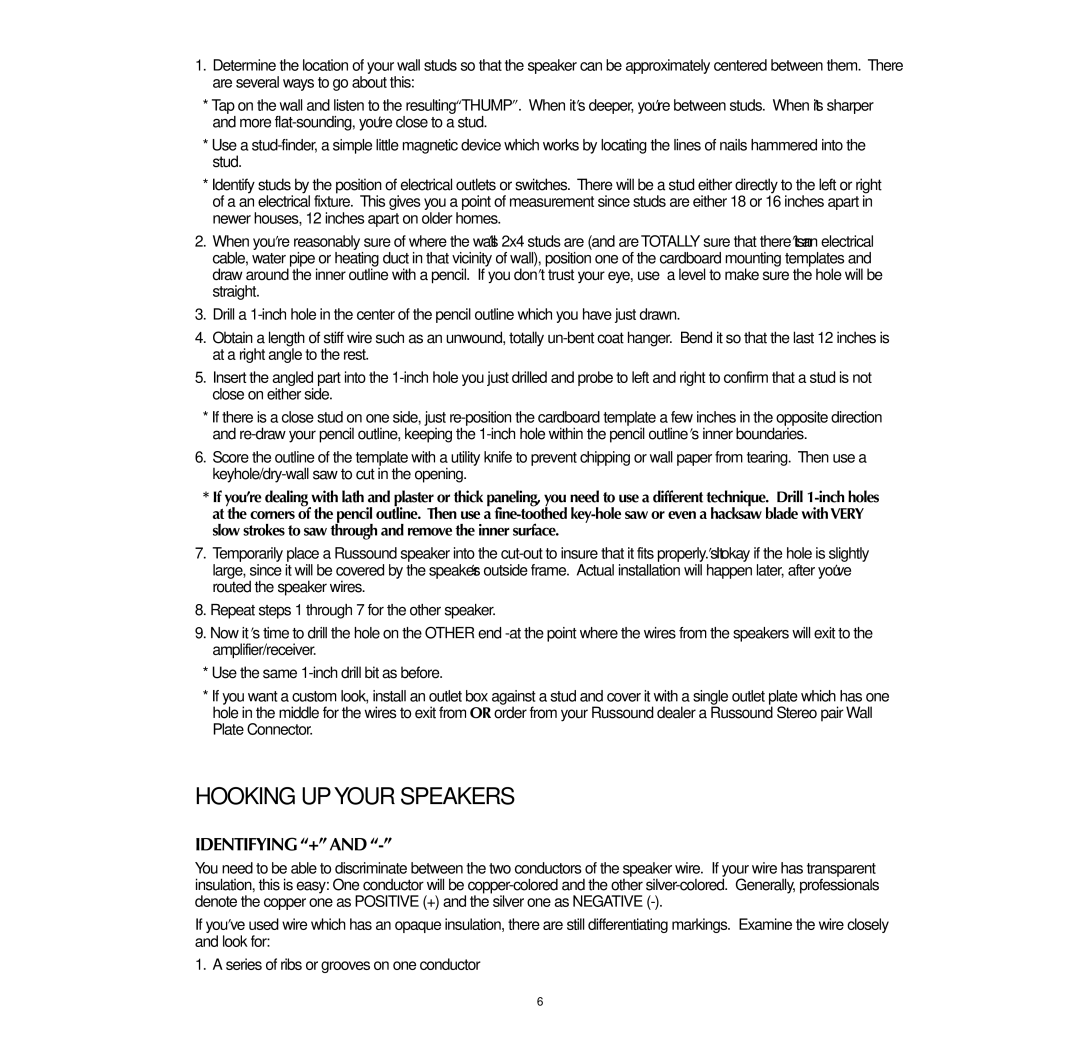1.Determine the location of your wall studs so that the speaker can be approximately centered between them. There are several ways to go about this:
*Tap on the wall and listen to the resulting “THUMP”. When it’s deeper, you’re between studs. When it’s sharper and more
*Use a
*Identify studs by the position of electrical outlets or switches. There will be a stud either directly to the left or right of a an electrical fixture. This gives you a point of measurement since studs are either 18 or 16 inches apart in newer houses, 12 inches apart on older homes.
2.When you’re reasonably sure of where the wall’s 2x4 studs are (and are TOTALLY sure that there isn’t an electrical cable, water pipe or heating duct in that vicinity of wall), position one of the cardboard mounting templates and draw around the inner outline with a pencil. If you don’t trust your eye, use a level to make sure the hole will be straight.
3.Drill a
4.Obtain a length of stiff wire such as an unwound, totally
5.Insert the angled part into the
*If there is a close stud on one side, just
6.Score the outline of the template with a utility knife to prevent chipping or wall paper from tearing. Then use a
*If you’re dealing with lath and plaster or thick paneling, you need to use a different technique. Drill
7.Temporarily place a Russound speaker into the
8.Repeat steps 1 through 7 for the other speaker.
9.Now it’s time to drill the hole on the OTHER end
*Use the same
*If you want a custom look, install an outlet box against a stud and cover it with a single outlet plate which has one hole in the middle for the wires to exit from OR order from your Russound dealer a Russound Stereo pair Wall Plate Connector.
HOOKING UP YOUR SPEAKERS
IDENTIFYING “+” AND “-”
You need to be able to discriminate between the two conductors of the speaker wire. If your wire has transparent insulation, this is easy: One conductor will be
If you’ve used wire which has an opaque insulation, there are still differentiating markings. Examine the wire closely and look for:
1. A series of ribs or grooves on one conductor
6
